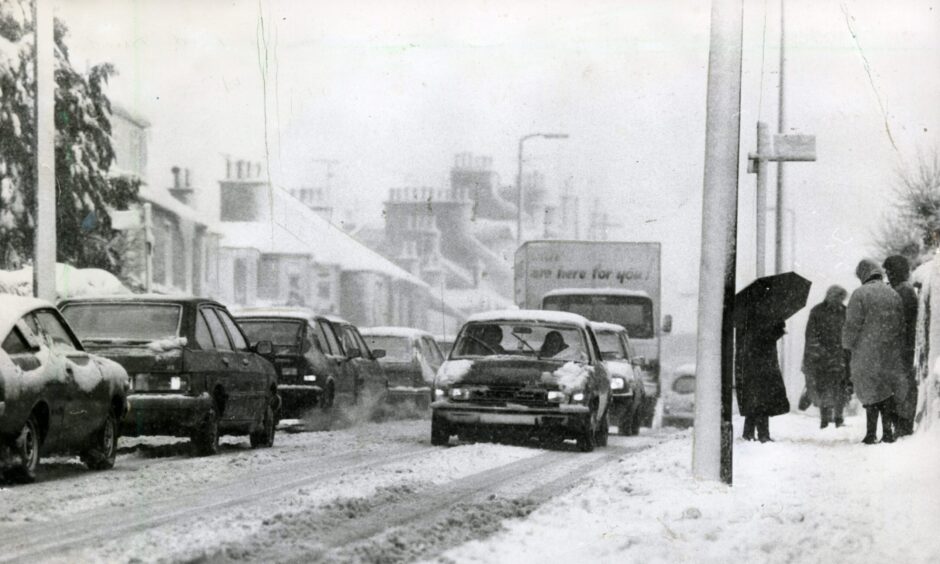
Snow, sleet and lashing rain carried by howling gales left Tayside and Fife at a standstill in January 1984.
It started postcard-pretty, but the snowstorm was deadly.
Snowfall blocked roads everywhere, marooned passenger trains, and cut off villages.
Scotland was battered by 106mph gusts and blizzards which started on Friday the 13th.
A 25-year-old man was struck by a tree while he was shooting geese near Kirriemuir.
He died instantly.
A British Rail driver suffered cuts to his arms and face from flying glass when the 7.12am Edinburgh-Dundee train hit a fallen tree on the main Fife line near Leuchars.
He was taken to Dundee Royal Infirmary for treatment.
The 8.21am Dundee-Edinburgh train managed to stop short of the tree.
A Dundee pensioner escaped injury when a 30ft tree fell on her house.
Falling trees caused so many problems in Tayside that a police spokesman said that every major road had been affected.
Country parks at Clatto, Crombie and Monikie were closed.
The Waterstone Crook inflatable sports centre at Newport collapsed in the gales.
There were widespread power cuts.
There seemed no end to the bitter weather
Local residents hunkered down in their houses and awaited some reprieve.
It didn’t come.
Monday the 16th was “one of the worst days ever experienced on the roads”.
Some routes were impassable only minutes after being cleared by snow ploughs.
Perthshire pupils were sent home early from school.
Fears mounted as the snow piled up that children would have to spend the night in
schools but concerned parents battled to reach their sons and daughters.
Some weren’t so lucky.
Around 40 second-year pupils from Perth Academy were put up in a house in Balbeggie when a bus heading for Burrelton became stranded in the village.
McLaren High School in Callander was closed for the day at lunchtime but 35 pupils who boarded a bus to go to their homes in Killin were marooned for several hours.
The children spent the night in a hotel.
The conditions were brutal.
Pupils had to get out and clear a track when a Pitlochry bus got stuck.
Many pupils at Perth secondaries from the countryside were delivered home in 4×4 vehicles although a few decided to stay overnight with relatives and friends.
Schools all over Fife were forced to close early because of bus cancellations.
In Angus, pupils were sent home at lunchtime.
Further education courses at schools and technical colleges were cancelled.
Leisure centres were forced to close.
In Dundee schools, offices and factories closed early as anxious teachers and employers grew concerned at the steadily worsening conditions during the afternoon.
The Courier said Dundee “came close to being sealed off from the outside world during the day” when snowdrifts and hard-packed ice hit roads and railway lines.
Hundreds were stranded
The coastal road and rail link to Aberdeen were for several hours the only routes unaffected while a non-stop battle with the elements was being fought.
Snowploughs managed to allow at least single-file traffic to travel on most of the roads, but on two routes, to Forfar and Blairgowrie, they had to admit defeat.
Dundee city centre suffered relentless showers of freezing sleet and by 5pm was “enveloped by slush, throwing commuters on public and private transport into chaos”.
Buses became stuck among abandoned vehicles in outlying areas.
The worst delays were suffered by buses serving Fintry and Mill o’ Mains which were up to an hour behind schedule while St Mary’s and Downfield were also badly hit.
At the Seagate bus depot, travellers had to wait for hours for buses.
The longest-suffering were the 30 passengers who boarded the service from Dundee to Blairgowrie at 2.45pm when heavy snow forced the driver to turn back at Muirhead.
Passengers had to wait for over five hours before going again – via Alyth.
Dundee Airport remained open although the two scheduled flights were cancelled because they were unable to leave from Dyce because of a blocked runway.
Areas stretching right across Tayside and Fife were also affected by power cuts.
Conditions were grim for the rest of the week but football was never far from the thoughts of die-hard Dundee fans – even in the midst of unprecedented weather.
Some 120 fans answered a rallying call from manager Archie Knox to help clear the pitch and surrounds of snow and save the Premier Division match against Celtic.
But the game was still called off 24 hours before kick-off.
Tayside Region’s director of roads Alex Mollison said 500 staff and 143 snowploughs and gritters were involved in the operation to keep the region on the move.
Things got worse before they got better
On the 21st more than 2,000 skiers were trapped in the Glenshee Ski Centre.
Nine sick people including four diabetics were airlifted to Ninewells Hospital when food and drink supplies ran out and a massive evacuation took place through 10ft drifts.
Three student climbers also died in a 100mph snowstorm on the Cairngorm mountains including 21 and 19-year-old brothers Graham and Keith Bell from Dunfermline.
A companion who went for help was found crawling along a road.
On the 23rd, snow lay 65cm deep in parts of Scotland with many places cut off and some AA rescuers reported some of the worst conditions in living memory.
Dundee became a beleaguered city.
A police spokesman described all routes in and out of the city as “absolutely chaotic” but snowploughs and gritters got to work with a vengeance.
Bus routes were reopened by mid-evening.
Although the timetable went out the window.
The drivers did well simply to keep the wheels rolling.
On the 24th a Wessex helicopter made an emergency landing in Blairgowrie.
Blairgowrie High pupils helped dismantle it and carried parts of the rotary blades before it was airlifted to RAF Leuchars by a Chinook helicopter.
There was a chink of light amongst the misery when 11-year-old Christopher Chaplin recovered after undergoing eight hours of surgery at Ninewells Hospital.
He was sledging with friends in Fintry during the weekend snowfall and suffered a fractured skull and severed an artery in his arm when he collided with a tree.
The nerves in his left arm were also cut.
The surgeons had to replace the artery with a vein from his leg.
He was moved into a ward after a spell in intensive care and was able to hold a conversation with parents James and Margaret for the first time since his accident.
His parents hoped that Christopher’s experience would be a warning to other youngsters to be very careful to enjoy the Siberian conditions “without tears”.
The tears of many were shed during January 1984.
The north suffered most from that cold blast of Arctic air.
Then the thaw set in and the sledges were put away.
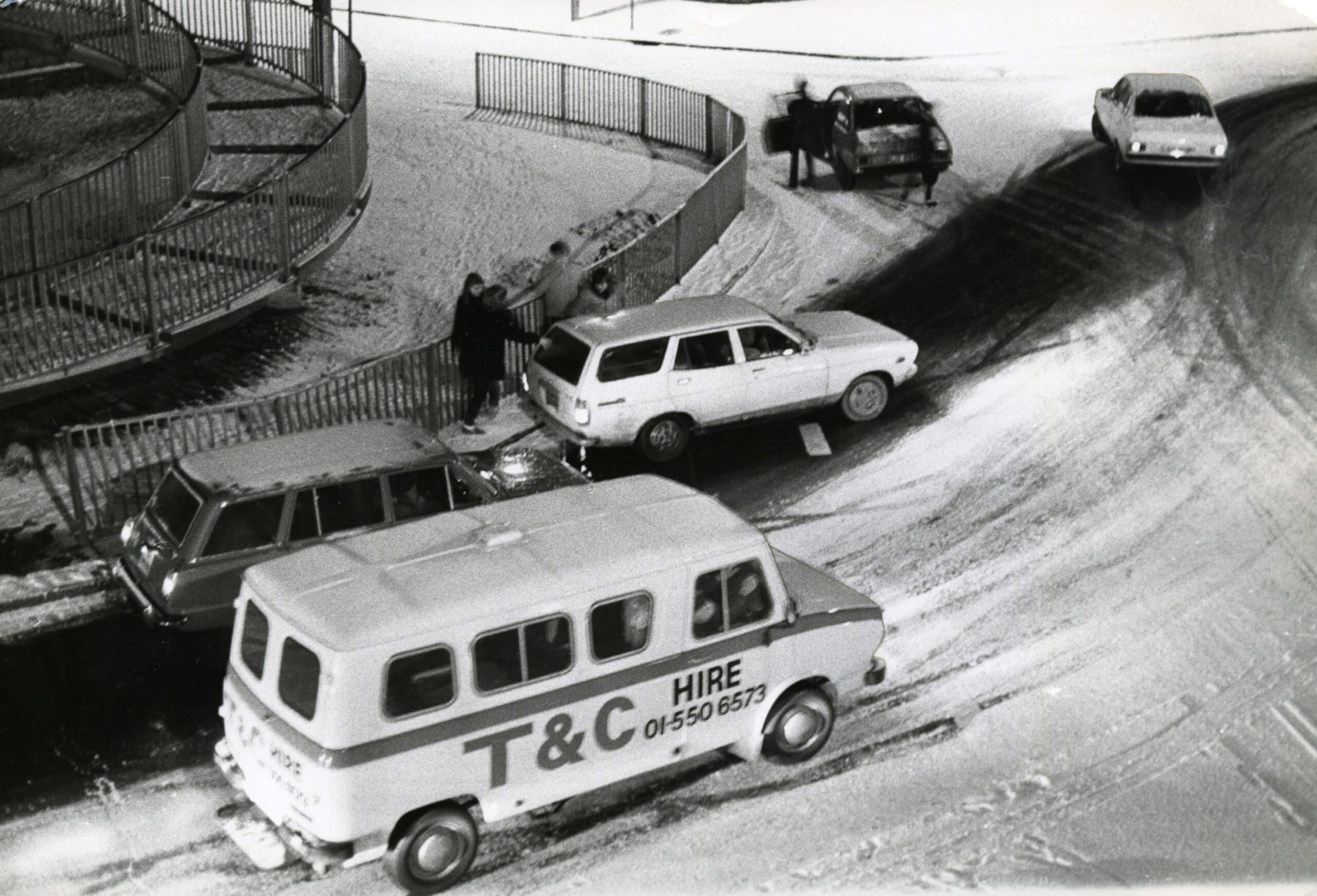
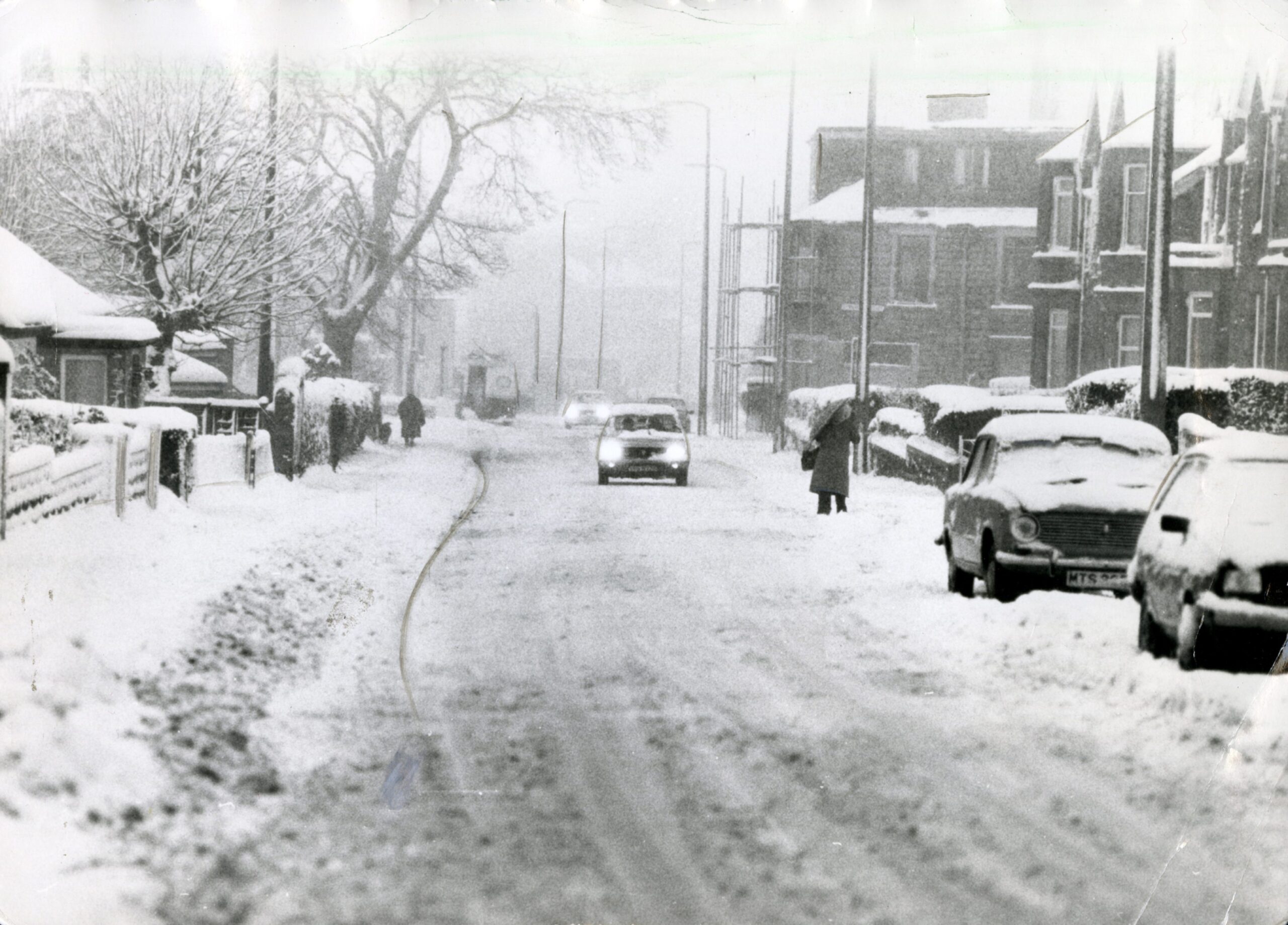
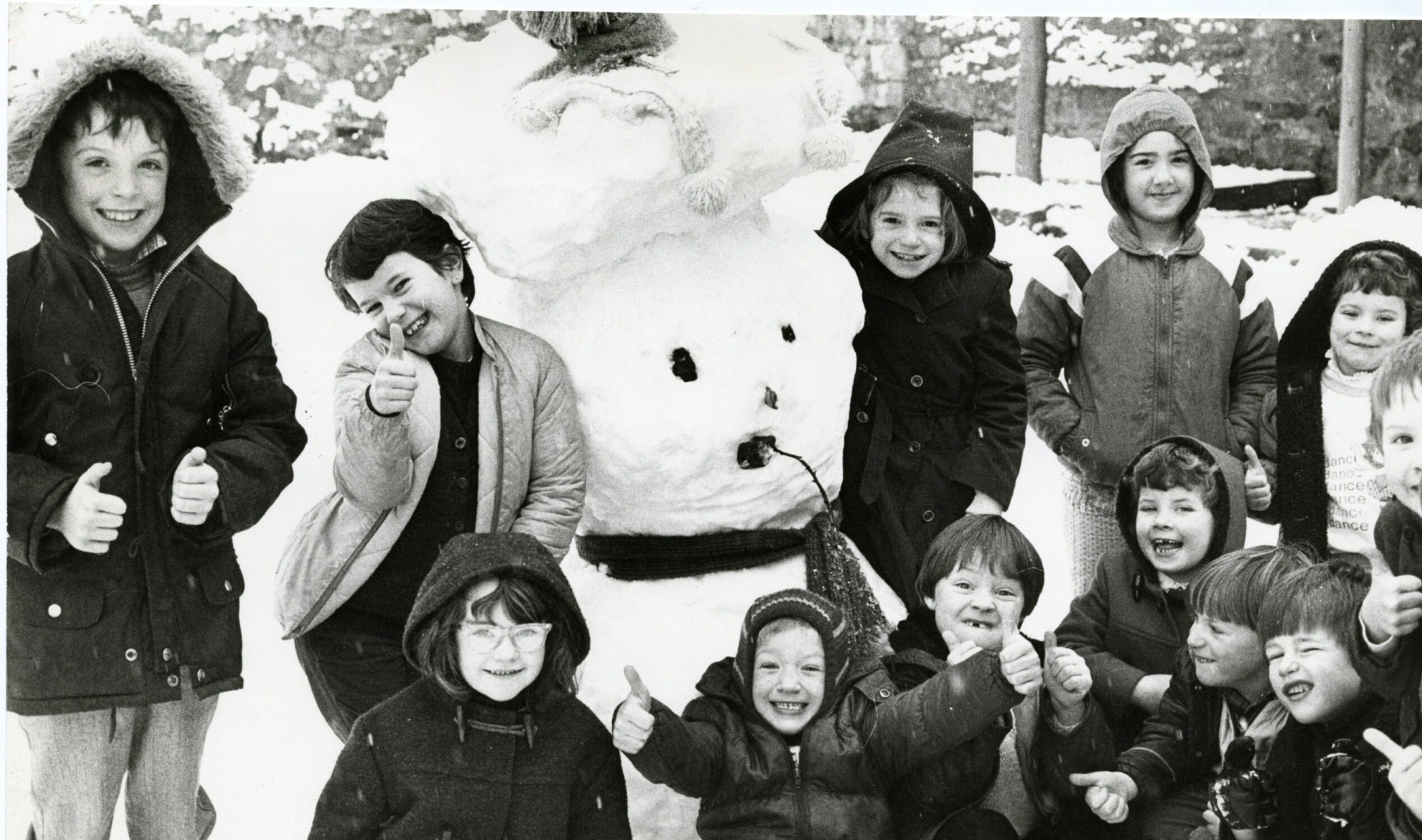
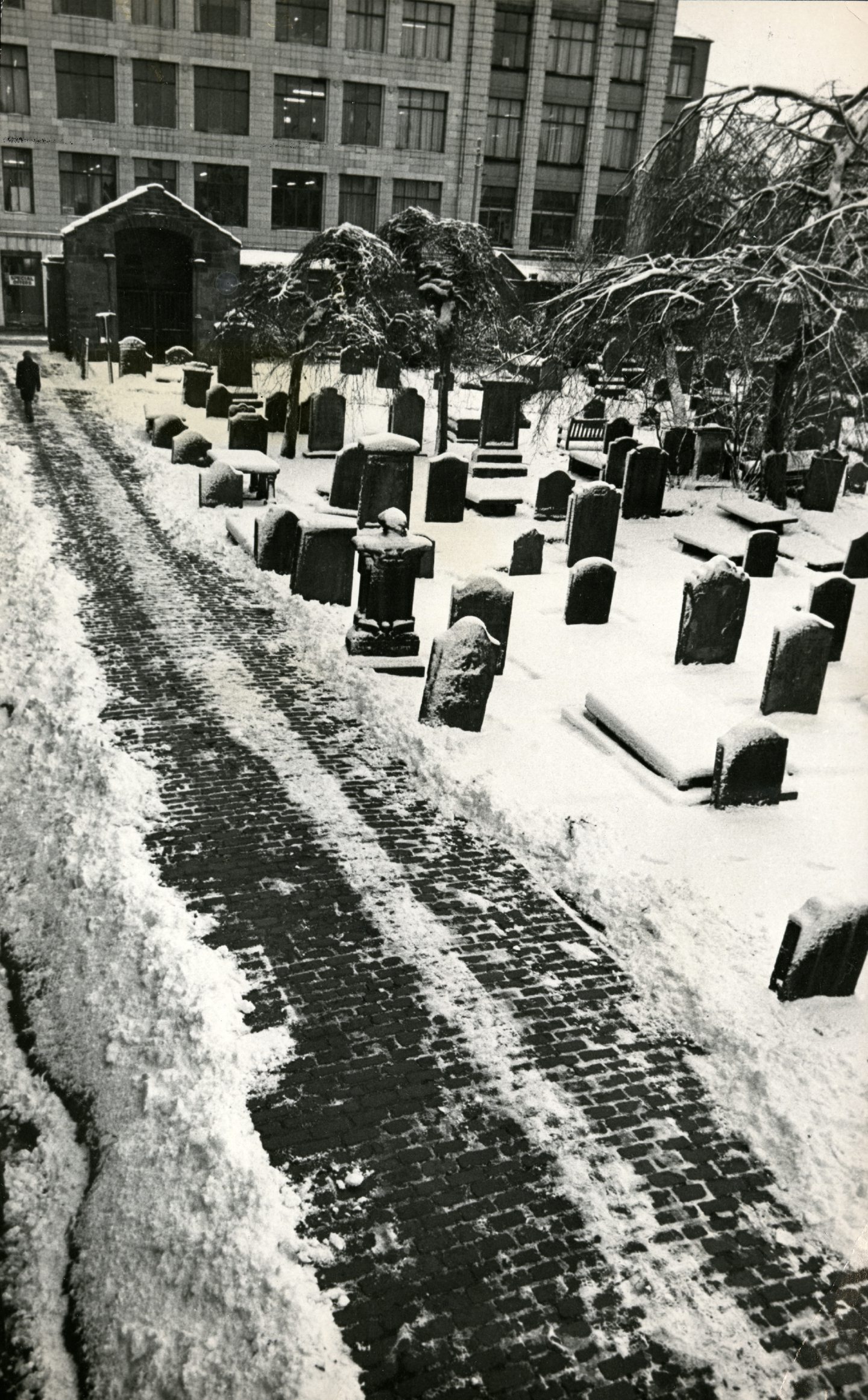
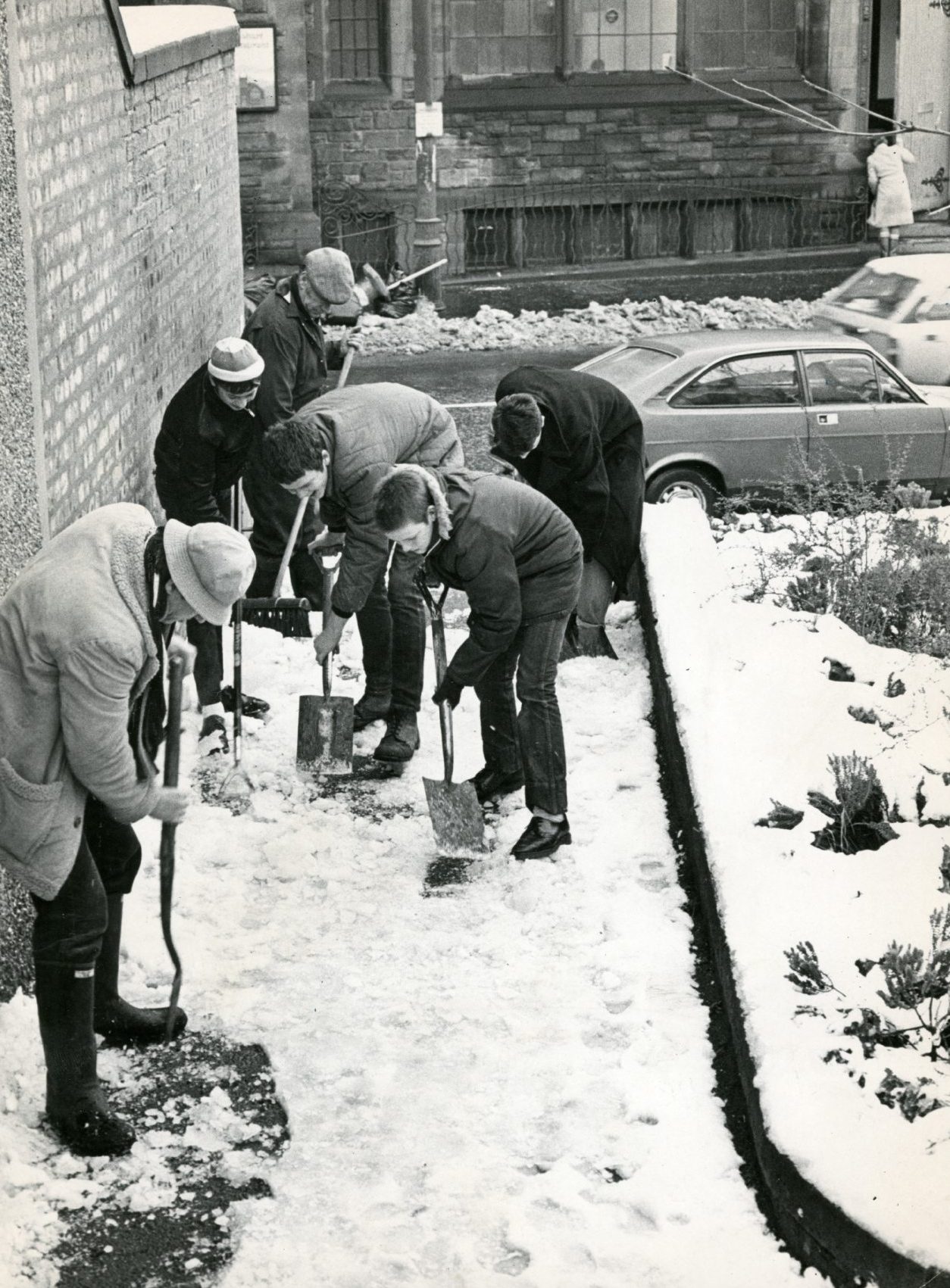
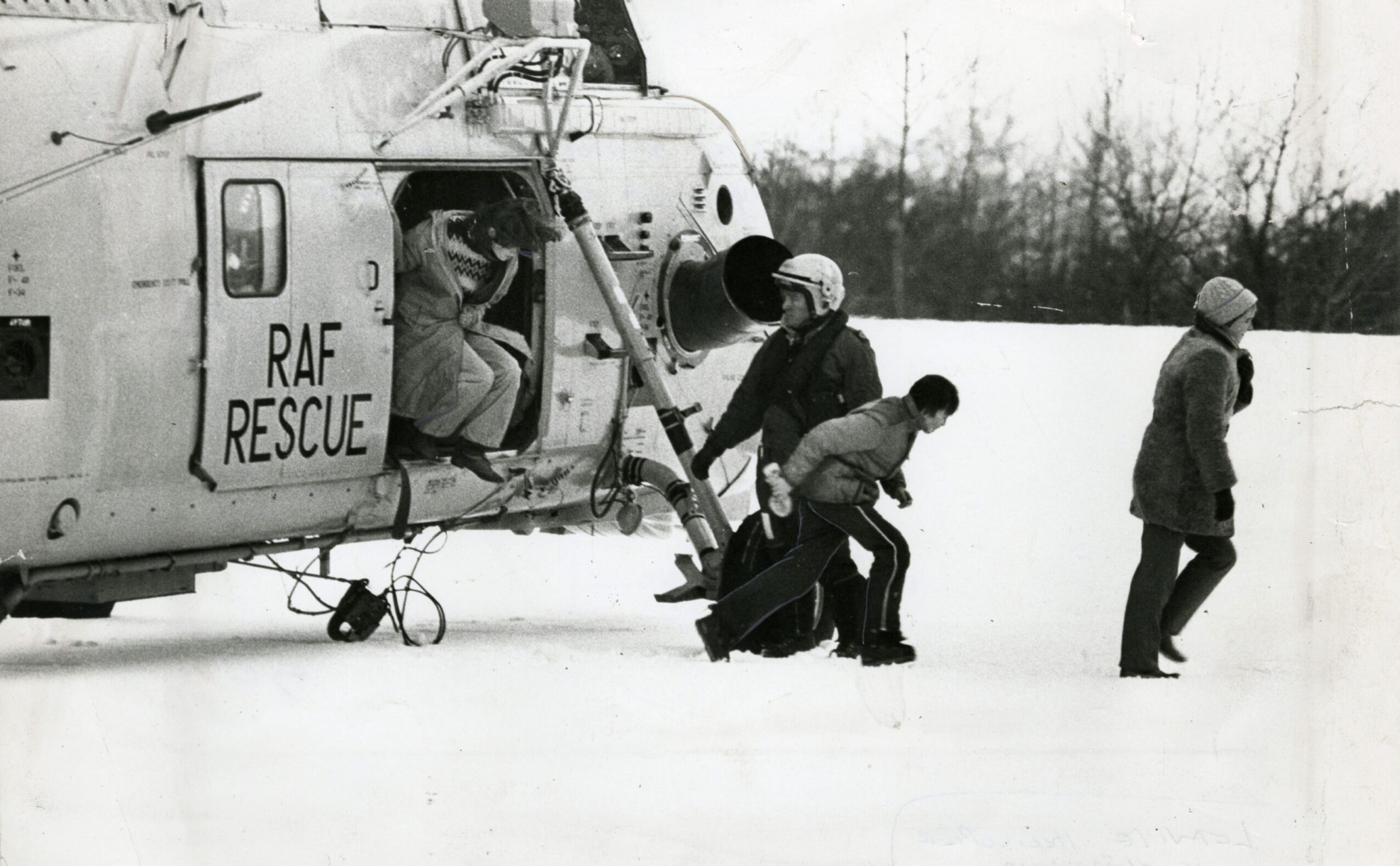
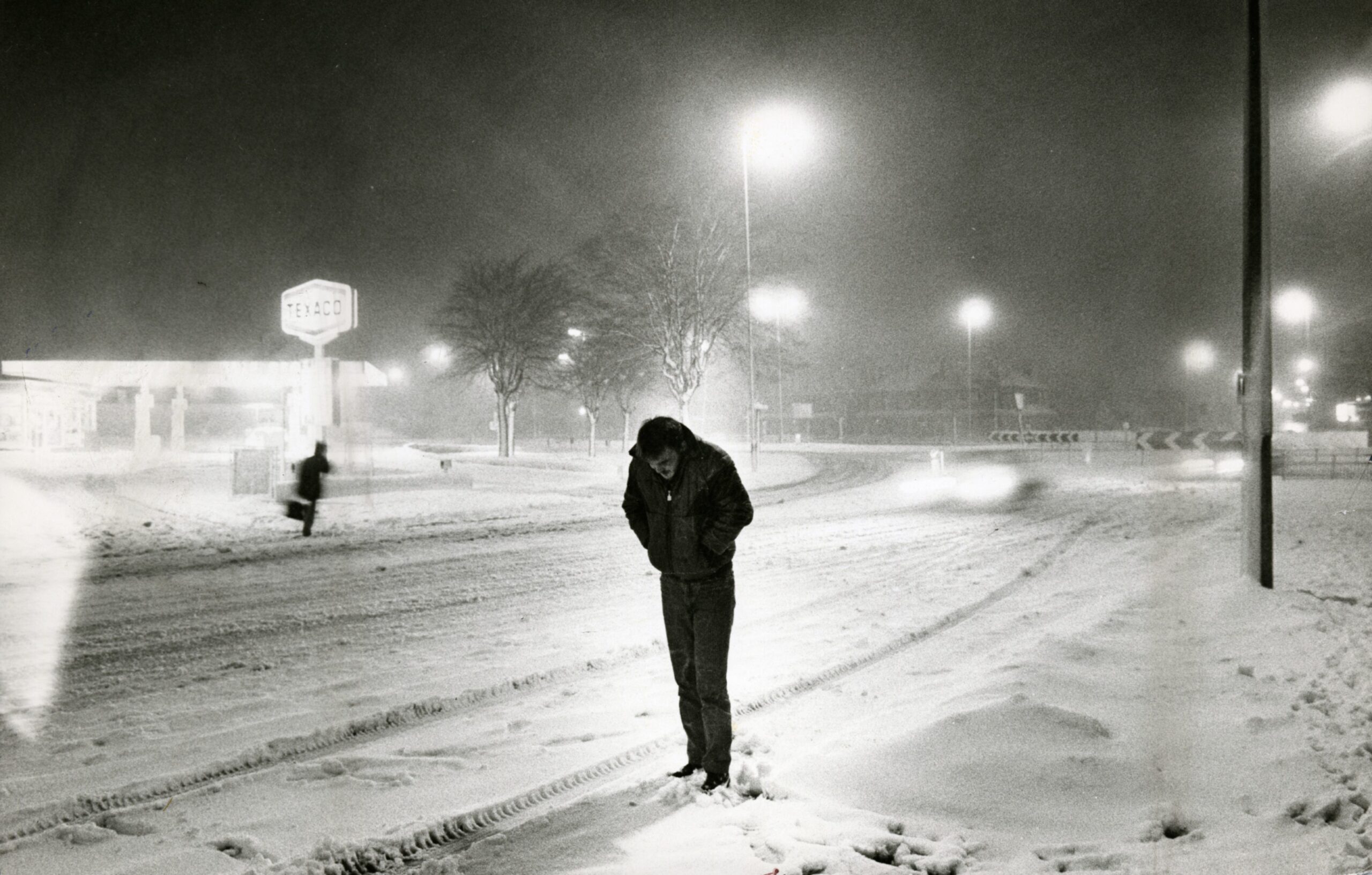

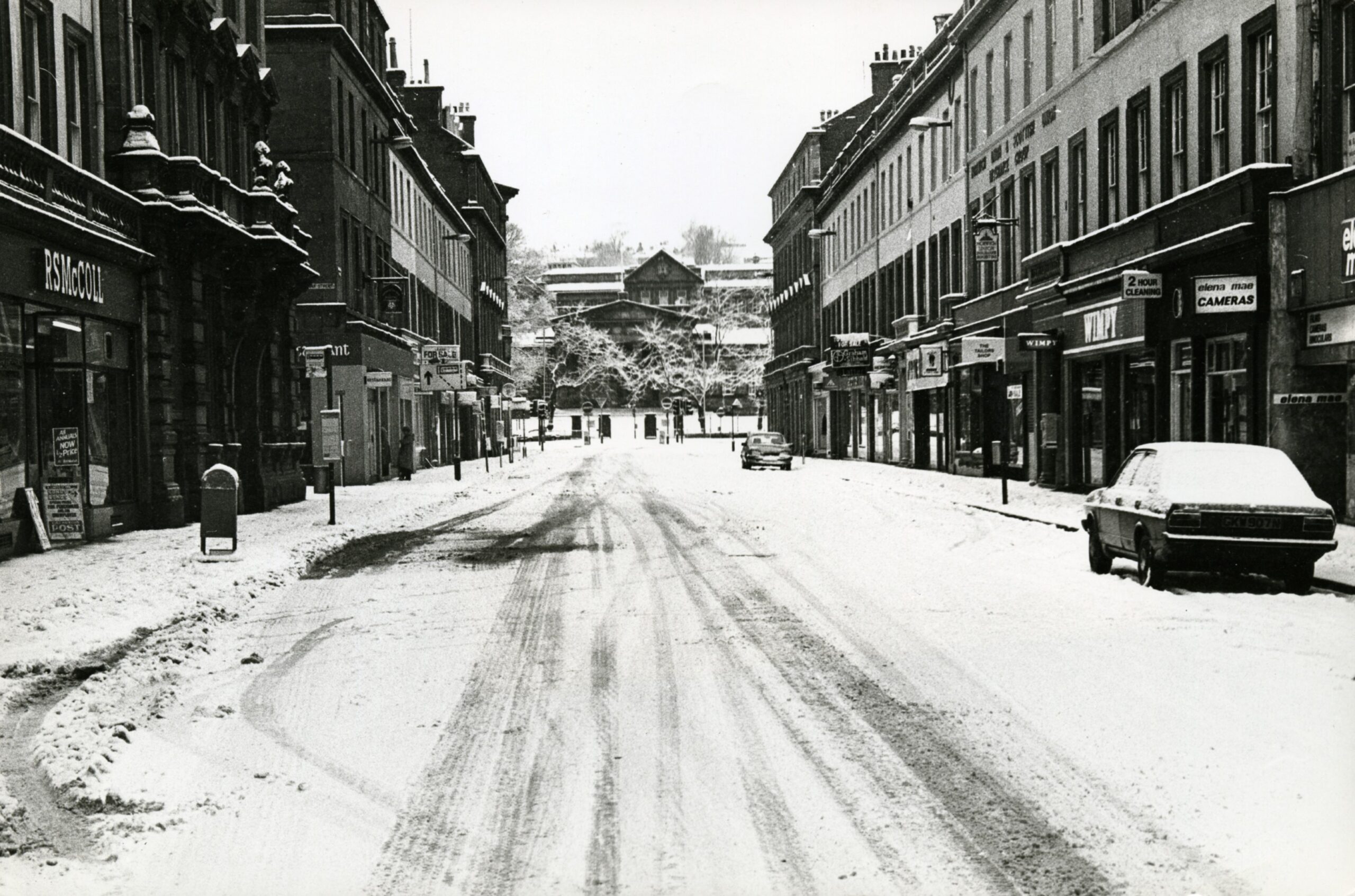
Conversation